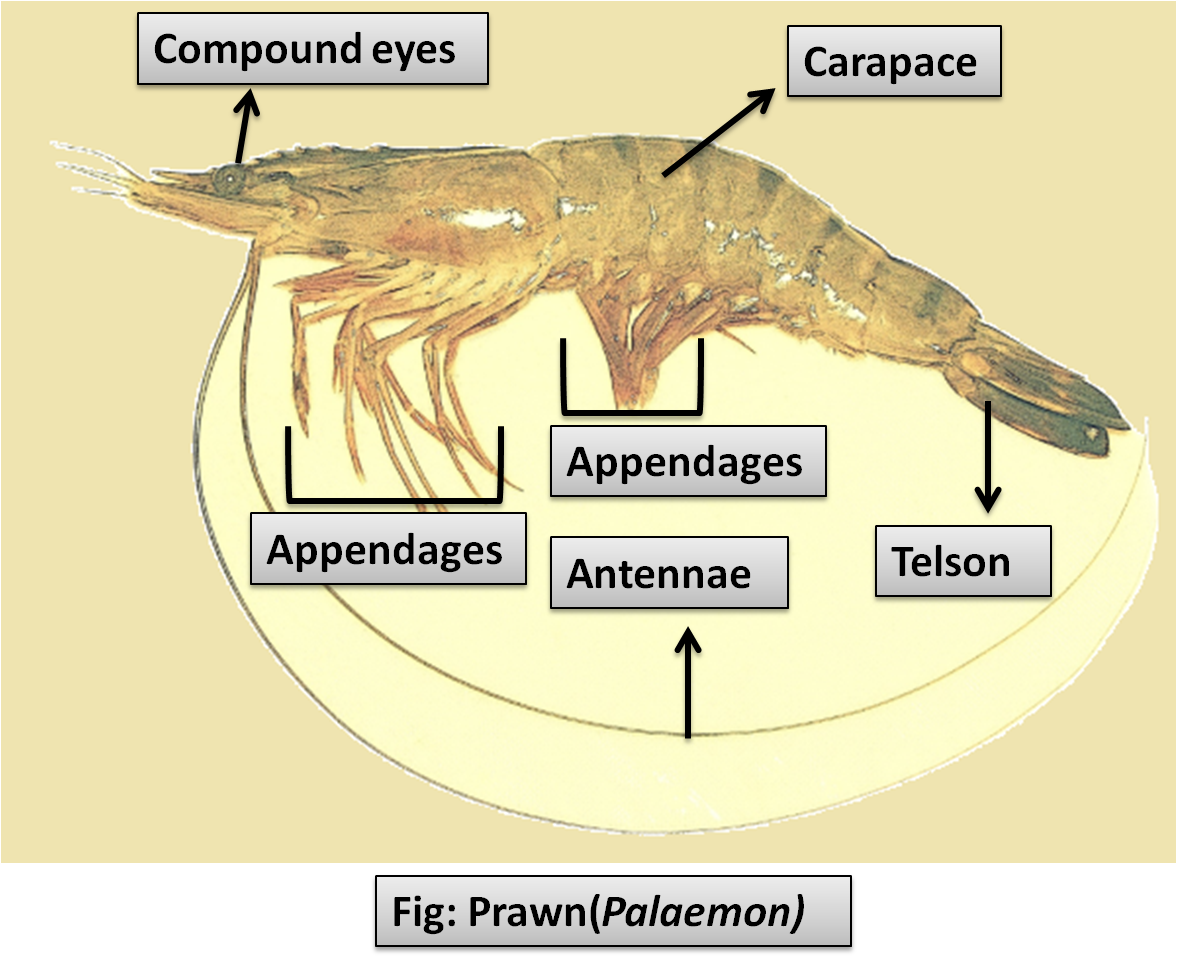
Crustacean fishery involves which of the following species?
(a) Lobster and prawn
(b) Shells of cuttlefish
(c) Mussels and squids
(d) Oysters and crab
Answer
483.6k+ views
Hint: The species involved in the crustacean fishery are the arthropods that are aquatic and popular as seafood. Their bodies are highly fragmented but united at various points and encapsulated by a tough exoskeleton.
Complete answer:
Crustacean fishery is a type of fishery that is concerned with the catching and harvesting of crustaceans, usually the ones which are abundant in shallower and more accessible areas of water bodies. It includes lobsters, shrimps or prawns, and crabs. Due to their high protein content, they have a high market value in the seafood market.
Additional Information: Crustaceans are a class of Arthropoda, wherein, their body is divisible into cephalothorax and abdomen. The head and thorax unite or fuse to form a cephalothorax. Dorsally, the cephalothorax is covered by a thick exoskeletal carapace. Two pairs of the antenna are present along with a pair of stalked compound eyes.E.g. Lobsters (Palinurus), Prawn(Palaemon), Crab(Cancer).
Cuttlefish, squids, oysters, and mussels belong to phylum mollusca. Phylum mollusca are divided into six classes including Cephalopoda and Pelecypoda. Cuttlefish and squids are cephalopods(literal meaning is head foot). Their head and foot regions are combined and modified into a structure that has eyes and tentacles.
Mussels and oysters are pelecypods wherein their shell is made up of two halves. Thus, they are also known as Bivalvia. They are also used as food.
So, the correct answer is ‘Lobster and prawn’.

Note: Lobster possesses five pairs of appendages whose function ranges from crushing the prey to cutting or pinching. They feed on small snails or shellfishes. Prawns bear nineteen appendages, out of which the cephalothorax bears 13 pairs of appendages while the abdomen bears six. The hard exoskeleton of the crustaceans is known as the carapace. The extended portion of carapace over their anterior eyes is known as the rostrum. Its posterior end of the abdomen is called the telson.
Complete answer:
Crustacean fishery is a type of fishery that is concerned with the catching and harvesting of crustaceans, usually the ones which are abundant in shallower and more accessible areas of water bodies. It includes lobsters, shrimps or prawns, and crabs. Due to their high protein content, they have a high market value in the seafood market.
Additional Information: Crustaceans are a class of Arthropoda, wherein, their body is divisible into cephalothorax and abdomen. The head and thorax unite or fuse to form a cephalothorax. Dorsally, the cephalothorax is covered by a thick exoskeletal carapace. Two pairs of the antenna are present along with a pair of stalked compound eyes.E.g. Lobsters (Palinurus), Prawn(Palaemon), Crab(Cancer).
Cuttlefish, squids, oysters, and mussels belong to phylum mollusca. Phylum mollusca are divided into six classes including Cephalopoda and Pelecypoda. Cuttlefish and squids are cephalopods(literal meaning is head foot). Their head and foot regions are combined and modified into a structure that has eyes and tentacles.
Mussels and oysters are pelecypods wherein their shell is made up of two halves. Thus, they are also known as Bivalvia. They are also used as food.
So, the correct answer is ‘Lobster and prawn’.

Note: Lobster possesses five pairs of appendages whose function ranges from crushing the prey to cutting or pinching. They feed on small snails or shellfishes. Prawns bear nineteen appendages, out of which the cephalothorax bears 13 pairs of appendages while the abdomen bears six. The hard exoskeleton of the crustaceans is known as the carapace. The extended portion of carapace over their anterior eyes is known as the rostrum. Its posterior end of the abdomen is called the telson.
Recently Updated Pages
Glucose when reduced with HI and red Phosphorus gives class 11 chemistry CBSE

The highest possible oxidation states of Uranium and class 11 chemistry CBSE

Find the value of x if the mode of the following data class 11 maths CBSE

Which of the following can be used in the Friedel Crafts class 11 chemistry CBSE

A sphere of mass 40 kg is attracted by a second sphere class 11 physics CBSE

Statement I Reactivity of aluminium decreases when class 11 chemistry CBSE

Trending doubts
10 examples of friction in our daily life

The correct order of melting point of 14th group elements class 11 chemistry CBSE

Difference Between Prokaryotic Cells and Eukaryotic Cells

One Metric ton is equal to kg A 10000 B 1000 C 100 class 11 physics CBSE

What is the specific heat capacity of ice water and class 11 physics CBSE

State and prove Bernoullis theorem class 11 physics CBSE




